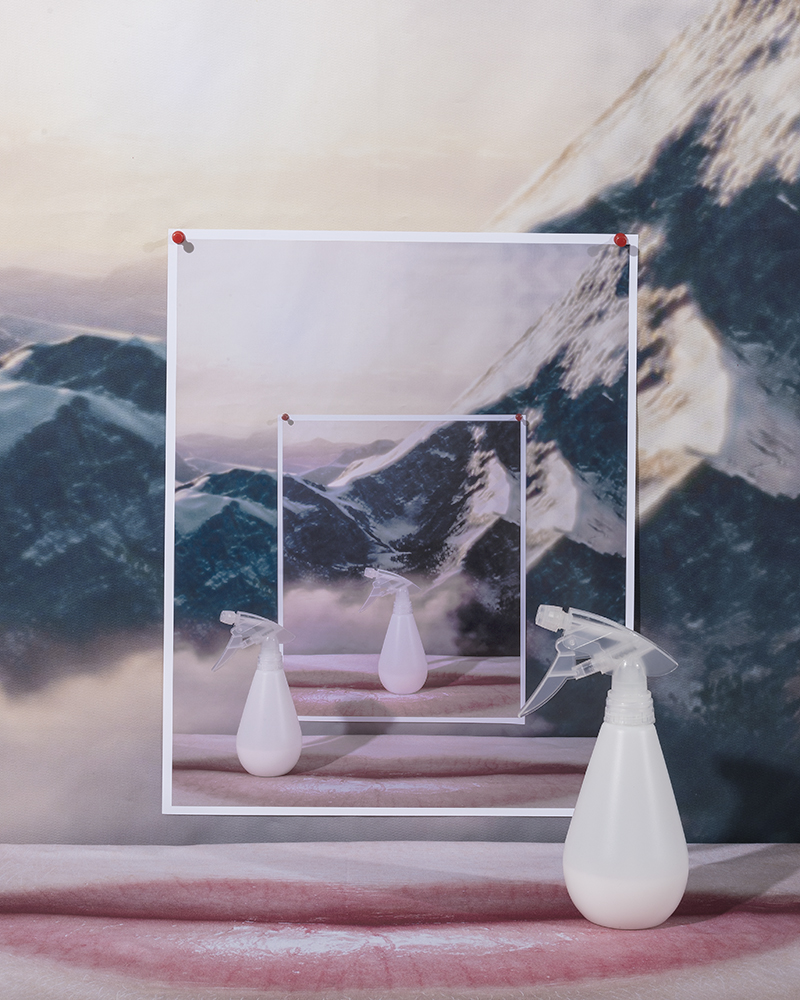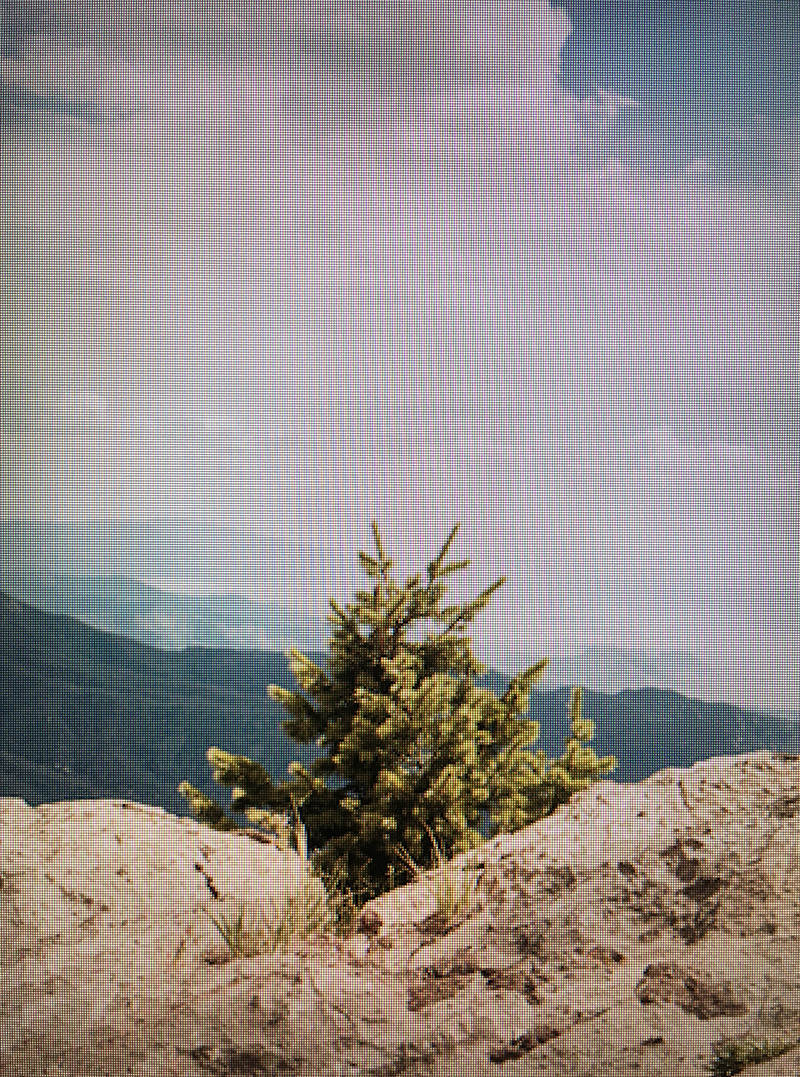Zac Travis’s recent works involve the combination of video installation, photography, algorithms, and other forms of digital content and media. Travis uses a copy-and-paste-like process that engages with the appropriation of open-source web-based content. While in constant collaboration with both technology and the internet, Travis is investigating the power dynamics and social influence of the internet while reflecting on and intervening in the systems that circulate said information.
Travis was born in Monroe, Louisiana and raised in the Dallas, TX area. In 2010 he moved to Denton, TX to attend the University of North Texas where he received a BFA in 2014. During this time he focused his attention on studying photography and visual culture of digital media. While studying in Denton, Travis co-founded adhoc.is; an online contemporary art database, documenting and sharing artists through interviews, editorials, and exhibitions (which is currently on hiatus).
Today, Zac Travis lives in Albuquerque, NM where he is attending the University of New Mexico as an MFA candidate, studying photography and expanding his focus on digital technologies, digital media, and visual culture of the internet.



Untitled
The series Untitled explores the mutability of the digital archive and its ability to create new environments in which the meaning of images is in a constant state of flux. The series acts as an unlimited archive of reproducible content, working with themes of appropriation, stock imagery, chance operations, and ubiquitous digital content. Aligned within a linear sequence, the prints depict a slow process of transmutation. Each image goes through a repeated process of being printed, photographed, and digitally saved. Each state of the image is then recorded and archived. The repetition of this action plays into the state of digital imagery as constantly shifting, accumulating, and easily reproduced.

BD: You state that your work focuses on three categories: “Digital ubiquity and the digital archive, interrogation of digital media, and computational thinking.” Can you speak a bit on your process and what drew you to concentrate on our current state of the digital age?
ZT: Yeah definitely! So, when I’m thinking about my core interests I always return to a time when I had my first personal computer and was given access to the internet. I was a contributor, spectator, and user of numerous social media sites, and message/image boards. You know, sites including, LiveJournal, Blogger, Napster, Photobucket, Myspace, 4chan, etc… I was always interested in the accessibility of information and digital content because of its instant gratification. With the use of the internet and website resources, I learned ways to access and gain “possession” of digital content or information that I could later refer to or utilize. My interest in everything “digital” emerged from this time period in my life. With a fascination of peer to peer exchange and of content being shared freely, I actually ended up building a digital archive of imagery amongst other found content online. It was this idea of collecting and then remixing. Taking imagery and then utilizing photoshop as a means to transform it into something of my own creation. Many years later while studying photography in college, much of my interest stemmed from reading essays and articles about the theory of photography. So inadvertently a lot of my work was about the photographic medium itself. In thinking about contemporaneity, I found it only natural to take many of these photo theoretical frameworks and place them with my interest in the digital age of the internet and technology.


BD: Do you ever dig back into your original digital archives when creating new work? It’s interesting to think about how much the internet has changed since the glory days of Myspace and 4chan. What seems like decades ago was actually pretty recent in retrospect.
ZT: Oh yeah without a doubt. My personal digital archive is forever evolving, being added to, and subtracted from. Right now I believe I almost have about 2TB worth of content. I try my best to organize it but there are a few loose threads. Most of the content I’ve been collecting lately is directed more towards stock templates for post-production in video editing.
As for the internet, I can’t imagine what it will look like in 10 years. Facebook is something that has been attentive of and I’ve always pulled it in to question. I haven’t had a Facebook in 4+ years and ever since then, I have felt a weight lifted off my shoulders. I have never been too trusting in the company and things are starting to slowly be exposed about Facebook as a corporation. I’m hopeful that this platform will slowly waver off and loosen its grips on controlling its users. To further explain what I mean by “controlling”… if you have a Facebook try and fully delete your profile and then ask yourself why you can’t go through with it. I always joke and say “Facebook equals the new Koch Brothers.” But it is interesting to ponder whether or not something will take the place of Facebook.


BD: I worked as an image reviewer for a stock photography company for a couple of years and found the stock world to be fascinating and unsettling all at the same time. How has the incorporation of stock images changed your work, and what first attracted you to this resource?
ZT: Haha yes it’s beautifully unsettling. The idea of stock anything/everything is absurd. We are definitely growing into a time where essentially everything is automated and being converted to a predetermined set of rules or data. With visual imagery, the automation is omnipresent in that everything has already been pre-made, pre-created, and pre-stylized. All you have to do is drag and drop, add a filter, and your work is finished. Automation and abundance are definitely what attracted me to the stock image at first; I.E. “everything has already been photographed.” Stock photography has become so pervasive within media that all of its tropes have become a normality of the way we recognize photography, visual culture, and society. This sets a foundation of an almost preconceived standard for seeing. Stock photography often attempts to reflect cultural models, values, and aspirations, and today represents an era in which originality, image integrity, and factual truth are not assured. All of these things make stock photography and stock media extremely problematic. But this is also why I’m interested in the idea of stock. The ease-of-use within stock media is so powerful to its users that they forget or ignore how and what the actual images are depicting, we have all become passive visual readers. There are a few artists and companies that are attempting to disrupt or subvert the intention of stock photography like collectives such as DIScollective and business models such as TONL. But I’ll stop it there because I could talk about stock photography and stock media for days on days.
BD: Haha, likewise. It’s a heavy subject to put down. I’m interested (and totally agree) in your note that the access to stock media causes us to become passive viewers, is this something you aim to combat in your own work?
ZT: Oh, good question. I most certainly strive for the subversion of stock media. I would say that I play with the absurdity of it all. I find humor can sometimes be a powerful tool to subvert the original intent of something. We see it happening all the time in meme culture and other forms of internet phenomenon, where the original intent is lost within a kind of destabilization of meanings.



BD: Many of your latest pieces are in video format. What made you take the leap from still photography?
ZT: To be blunt, I’ve never really been fond of the segregation of mediums within the art world. The idea of sticking to one medium is a little claustrophobic for me. That being said, I believe everything is transmutable with signs of visual language and that if the idea is what is most important to the work it can be explored through other mediums and formats. This brings me to a phrase coined by Marshall McLuhan, “The medium is the message.” Basically, McLuhan proposes that the medium embeds itself in any message it transmits or conveys, creating a symbiotic relationship by which the medium influences how the message is perceived. Keeping this in mind, I like to explore this notion. I believe that the video format is one of the most active/ response-driven mediums within our screen-dependent culture. Think youtube. A video can have all of the instant information compacted into a single segment of time, given to you on a silver platter, and with instant gratification. While I still work a lot with photography, I’ve found video to be more of a relevant medium to transmit a message. Another reason why I’ve been exploring video further is in regards to my interest in the non-physical digital object. I’m interested in the idea of having and making something that is essentially non-existent in the real world. While the internet and digital content are in-fact housed within a physical thing (refer to data banks, server farms, and fiber optics internet mapping) I am wanting to play with the idea of digital information as art, the digital artifact, and algorithms as art. How is that work sold? portrayed? Traded? Being the net-head that I am, I think all digital information should be freely available and freely shared amongst the internet and its users. The video format is something that can be freely shared and transmitted globally.


BD: Lastly, can you give us a current read / movie / music / artist / website that’s on your radar?
ZT: Reading: “Can Jokes Bring Down Governments? Memes, Design and Politics” by Metahaven, also “New Dark Age” by an artist named James Bridle.
Movie: Just re-watched the classic “WarGames” (1983)
Music: “Sudan Archives – Sink” and “Daughters – You Won’t Get What You Want” and “Kurt Vile – Bottle It In”
Artist: Cecile B. Evans, Jon Rafman, Alex DaCorte, Hito Steyerl
Website: Jodi.org
BD: Wonderful. Thanks again, Zac! Looking forward to seeing what you’re working on in the future.
ZT: Thanks so much Bailey, enjoyed chatting with you!


To view more of Zac Travis’s work please visit his website.